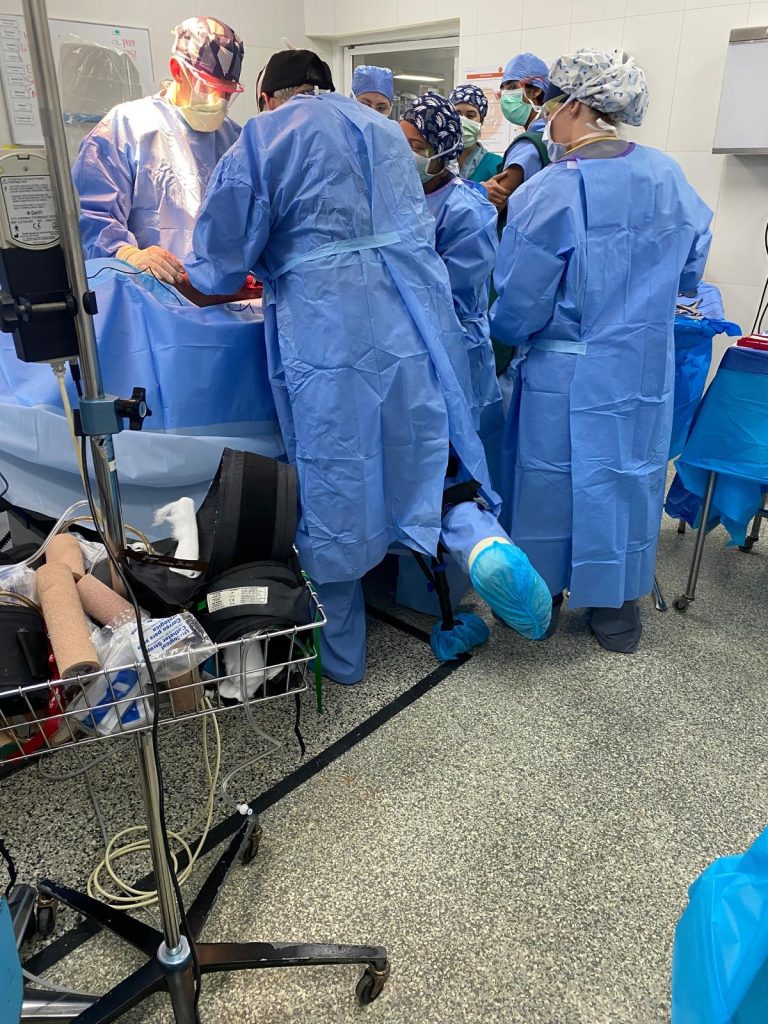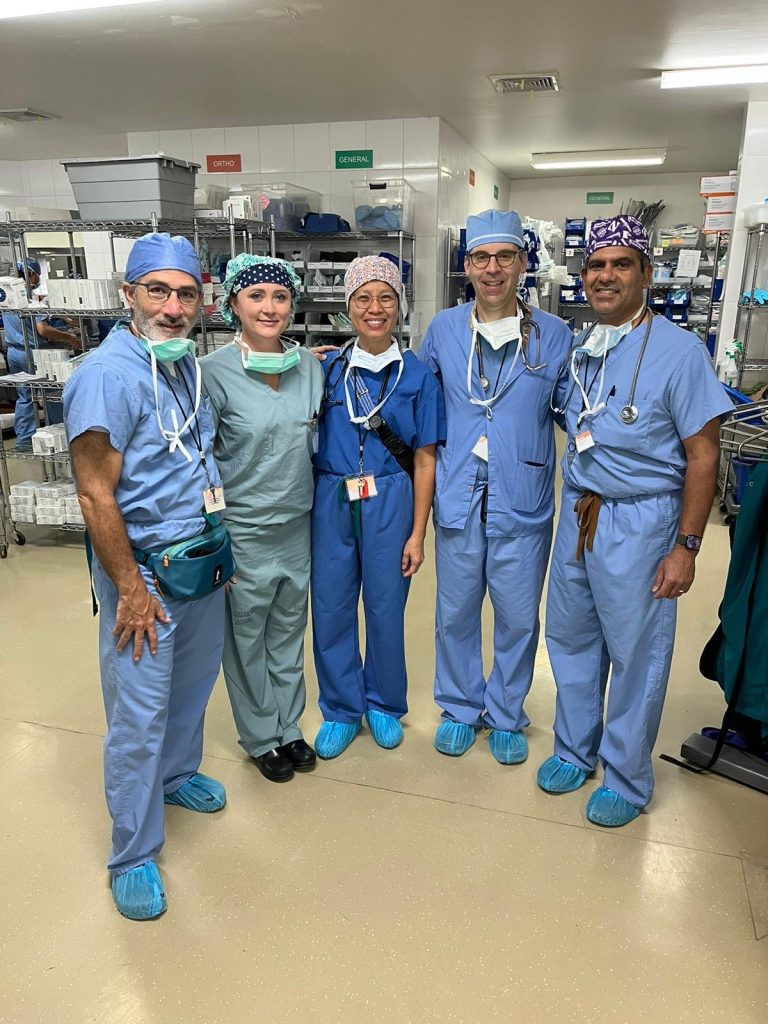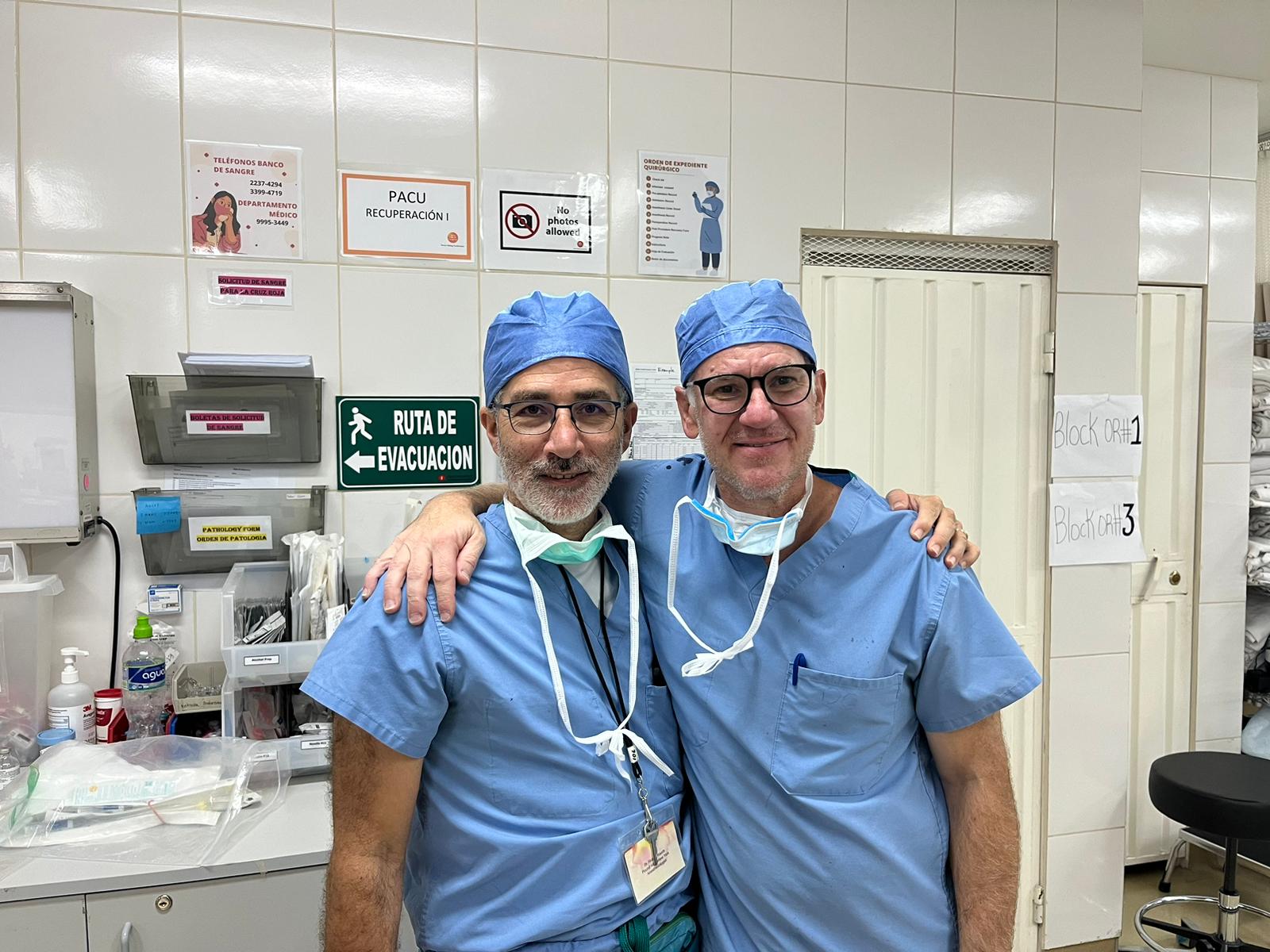Combatting Burnout: How Volunteering Reignited a Pediatric Anesthesiologist’s Spirit
Can you describe your background and what inspired you to volunteer with One World Surgery?
My name is Dr. Rob Rauch, and I’m a pediatric anesthesiologist and Chair of the Optum/Caremount Anesthesiology department, which is part of UnitedHealth Group. One World Surgery and SCA Health hosted a gala and Dr. Rafael Axen, a senior medical director at Optum, met Dr. Peter and Lulu Daly there. He learned that they needed anesthesiologists for an upcoming medical mission trip in July. When Dr. Axen got back, he emailed asking if anyone from our department would be interested, and I immediately jumped at the opportunity. This was an orthopedic mission, led by Dr. Daly and a group of surgeons from the Mayo Clinic, Texas, Colorado, and Nevada, which was particularly exciting. It was a perfect opportunity to rejuvenate my sense of purpose as a doctor and remind myself the reason I went into medicine was to help people.
I was initially nervous about whether my skill set would match the requirements and if I could build the necessary relationships to be a valuable part of the team. But Peter and LuLu are so kind, and the energy exuding from everyone was palpable. Everybody was smiling and happy to be there. The volunteers in my group had never met each other before, but it felt like doctor summer camp. From the minute we landed, from helping bring everything from the airport to the facility, everybody was working together as a team. This was my first medical mission, and it won’t be my last.
Did you have certain expectations before your trip? How were those expectations challenged?
I was expecting to go on a mission where I’m in the backwoods, trying to piece together anesthesia machines, and working in dilapidated rooms. And when I showed up to this experience, the quality and level of care was so high that it was unbelievable. On our first day, we went on a tour of the facilities and met the surgeons to talk about the cases we would be doing that week. Dr. Raghu Thunga and I shared our input on the anesthetic needs for the total joint replacements we planned to perform. The brilliance coming out of the surgeons inspired me.
Here, we take care of people who sell their phones, their cars, whatever it takes to get them to this facility. Some ride horses or take multiple buses just to get here. And when I looked at their x-rays, I could see that some of these people have lived with injuries and diseases for years. It’s truly sobering.
It was amazing listening to the surgeons speak about how they were going to approach and fix these complex conditions. They had no doubt that we were going to be able to help these patients and transform their lives, their families’ lives, and the community. Global health and surgery are such important aspects of medicine. And I was grateful to be a part of it.
What does the spirit of service mean to you?

The spirit of service was present throughout the mission. One particularly memorable moment for me was when a mother brought in her three-year-old daughter with a broken elbow, despite it being an adult surgical week, because they couldn’t get care anywhere else. I’m a pediatric anesthesiologist, and I was excited to use my skillset to help this child who would be operated on by a top elbow surgeon from Colorado. After one hour, we finished surgery and put a cast on her, and they were able to go home smiling.
The spirit that you get at that moment when the patients thank you and pray for you is so special. I’m fluent in Spanish, and so I listened to what they were saying as they held my hands and said, “Thank you for coming here to help us. We appreciate it so much.”
It’s so important for us to remove barriers for these people who are struggling to receive the care they need. I’m a firm believer that we can help people up the ladder in life. Our goal as surgeons, doctors, nurses, or students is to remove the barriers for these people and provide the highest-quality care possible. And we did that together. I looked forward to getting up every single morning and getting over to the surgical center with my team.
What challenges did you experience?
I was intimidated being around doctors from the Mayo Clinic, Nevada, and Colorado. These are high-level experts. But after the first patient, I remembered that I’m a good doctor and I was a part of this team. There was respect between all of us. And I thought to myself, I’m so glad I’m here. I don’t want to leave.
Dr. Neiman was even there with a broken ankle and in a cast. There was a case where we needed his expertise, and he scrubbed in, had his knee supported in the operating room, and took care of the patient. I was blown away. His injury didn’t matter – he was there to help, and it went great. This is what this mission is about.

In what ways do you feel like you made a direct impact on the communities and volunteers?
It was an overall teaching experience, which is my favorite thing in the world. One of the CRNA’s daughters wanted to learn how to perform ultrasound guided regional blocks. Every day I would teach her the blocks I was doing. And by the end of the trip, I would ask her which block we should do for a patient. She would give me the answer, we’d do the ultrasound, and she’d point out everything she learned. The joy that I had in seeing her smile and learn was heartwarming. And who knows? Maybe she’ll be inspired to go into medicine or carry that with her in other ways.
You always want to leave an impact, so Dr. Thunga and I also taught ultrasound techniques to the local doctors to give back and strengthen their skillsets. Dr. Thunga and I are also working on protocols for providing anesthetic care to patients undergoing cataract surgery. I’m excited that I get to continue being a part of improving the quality of care. It really is an amazing experience.
Did this volunteer experience remind you of why you went into medicine?

One hundred percent. As Chair of the Anesthesiology Department, I’ve become more on the management side and less on the patient side of care. When you go into medicine, it’s because you want to help people. I just wanted to show up and say hello to the patient and say I’m here to take care of you. And I got to do that for about 15 patients every day. I sat in prayer for 15 minutes before we went into surgery with a patient thanking me for being there.
I’ve always thrived off not being considered just a doctor, but a person who genuinely cares about people. Anesthesiologists tend to feel somewhat removed from the patient compared to a surgeon. But I got back to the reason why I went into this as I talked with the surgeons, nurses, and patients. I felt that when the day was done, we really helped people. That spirit was reborn in me. And I needed it. This was my way of healing my own burnout.
What advice would you give to future volunteers?
The facilities were so well organized and there wasn’t any cutting of corners. Every patient that we took care of was by the book. The paperwork was filled out. Everything was optimized before we showed up. The food was great. There’s nothing to worry about in terms of safety or quality of care, which is what I think stops people from participating.
Family isn’t always about blood. Family is about the people you meet, the people you work with, and the people that you can help. So, we all become one family. That’s what made it special – that we were all there for one purpose: to help. Volunteer – you’ll wonder why it took you so long!
STORIES
